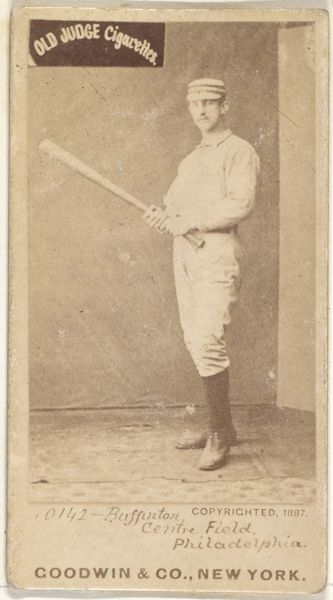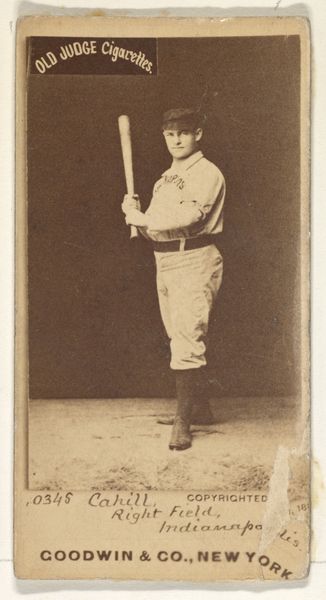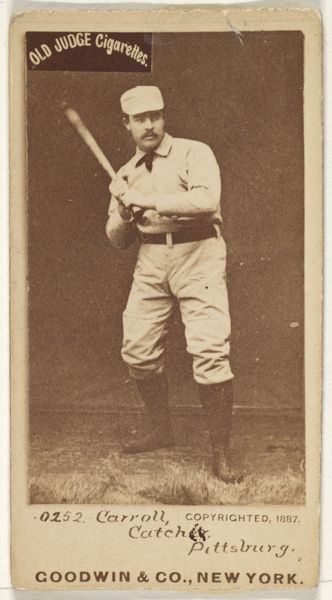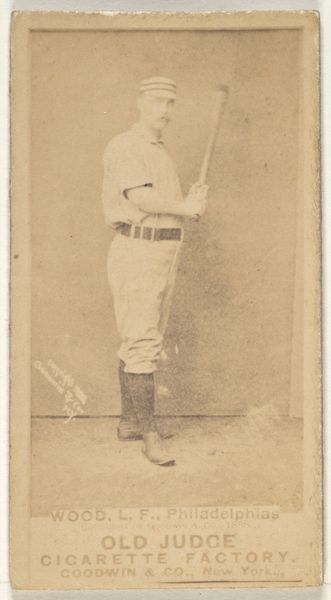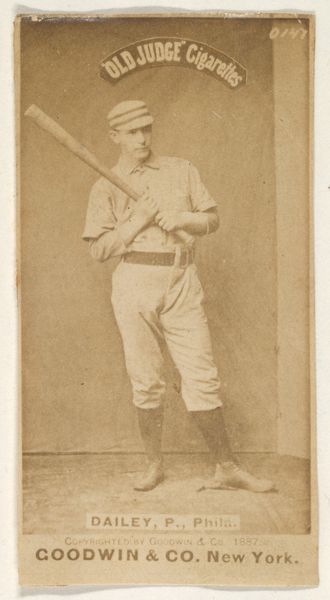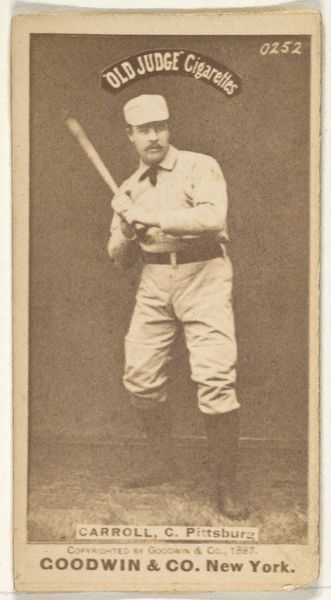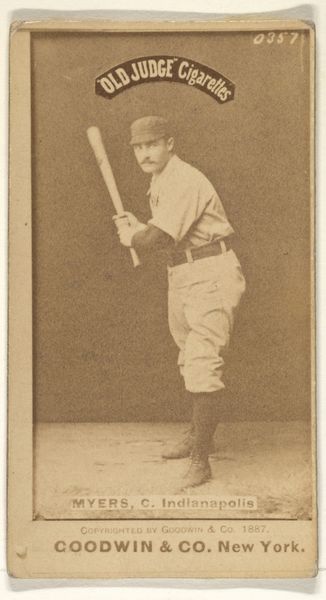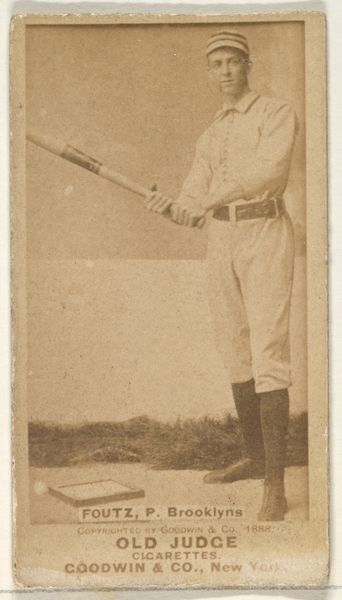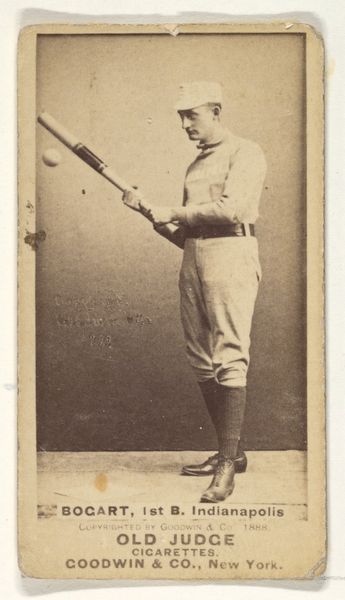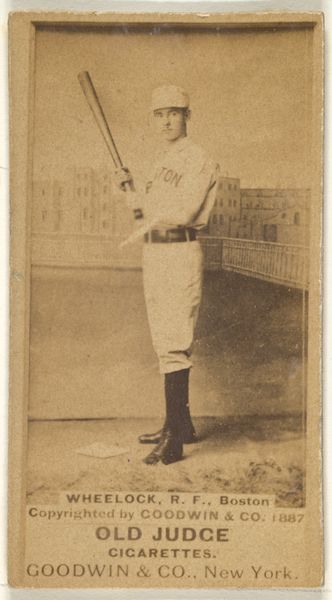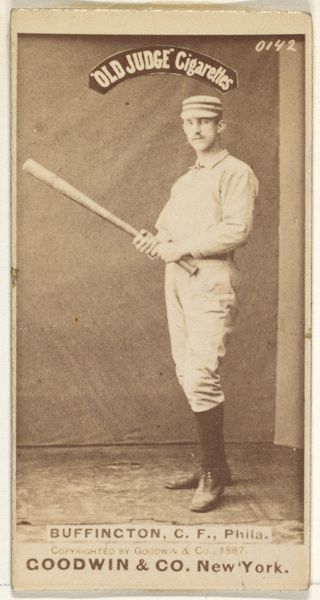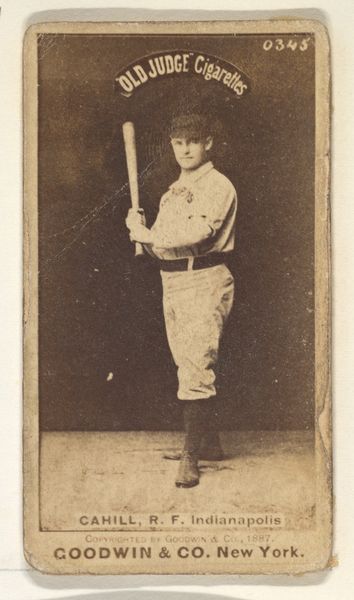
George Frederick "Doggie" Miller, Catcher, Pittsburgh, from the Old Judge series (N172) for Old Judge Cigarettes 1887
0:00
0:00
drawing, print, photography
#
portrait
#
drawing
# print
#
baseball
#
photography
#
19th century
#
men
#
athlete
Dimensions: sheet: 2 11/16 x 1 3/8 in. (6.9 x 3.5 cm)
Copyright: Public Domain
Curator: Here we have a piece titled "George Frederick 'Doggie' Miller, Catcher, Pittsburgh" produced in 1887 by Goodwin & Company as part of the Old Judge Cigarettes series. It's currently held at the Metropolitan Museum of Art. Editor: My first impression is of a sepia-toned snapshot of sporting history, though there is something rigid and posed about it. The lighting, however, seems well considered, accentuating the subject’s facial features. Curator: Indeed. This was a period where commercial culture and baseball were rapidly expanding, and these cards served as both advertisement and cultural artifact. The series itself reflected an emerging interest in celebrity and consumerism, intertwined with leisure. Editor: I agree; consider the composition; the subject, this “Doggie” Miller, is carefully positioned with his baseball bat, filling nearly the entire vertical space. Notice how his gaze is directed off to the side. Curator: The use of photography on these cards was transformative. It democratized portraiture and offered everyday fans a tangible connection to their heroes. This particular image demonstrates an intersection of early photographic techniques, printing methods, and nascent marketing strategies. Editor: Exactly, the restricted color palette is visually uniform. It adds to the serious character while the borders box the athlete within. There is something distinctly American, even austere, in this very careful framing. Curator: The “Old Judge Cigarettes” connection is key. The cards offered visibility to the players and advertised a product associated with the rising middle class. It’s a study of capitalism shaping culture. Editor: From a design perspective, the lettering below adds a structural element to the card, acting as a firm foundation. It anchors the image, giving it balance despite its simplicity. Curator: These cards circulated widely, ending up in homes, saloons, and collections, thereby embedding baseball imagery into the collective memory of the time. It is indicative of the democratization of the game through accessibility in mass media. Editor: Reflecting on it, there is indeed something both historical and immediate in its appeal. One can see its enduring popularity as a result of that balance between accessible and engaging visual cues.
Comments
No comments
Be the first to comment and join the conversation on the ultimate creative platform.
